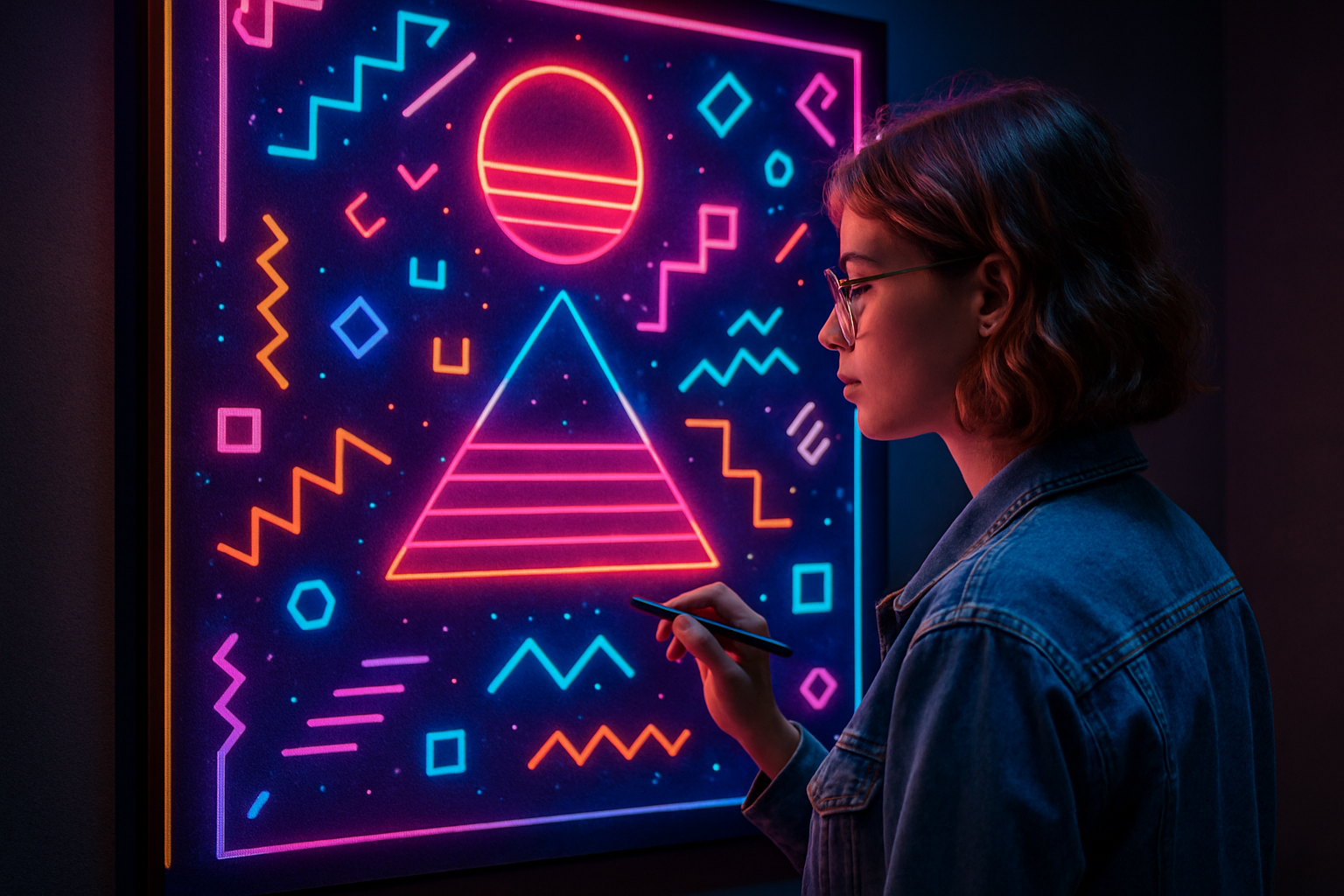Neon Nostalgia: The Resurgence of 80s Aesthetics in Modern Art
In a vibrant collision of past and present, the unmistakable visual language of the 1980s is making a bold comeback in contemporary art. This neon-soaked renaissance is more than mere nostalgia; it's a dynamic reinterpretation of an iconic era, infusing modern creativity with the exuberant spirit of a decade defined by excess, optimism, and cultural revolution. As artists across disciplines embrace the bold colors, geometric patterns, and unapologetic glamour of the 80s, we witness a fascinating dialogue between retro aesthetics and cutting-edge artistic expression.

Digital Nostalgia and Social Media
The internet age has played a crucial role in reviving 80s aesthetics. Platforms like Instagram and TikTok have become virtual galleries for artists experimenting with retro-inspired visuals. The hashtag #80sAesthetic has millions of posts, showcasing everything from digital art to fashion photography infused with the decade’s iconic look. This digital nostalgia has created a feedback loop, inspiring more artists to explore the era’s visual language.
Neon Nights: The Return of Bold Colors
One of the most striking elements of the 80s revival is the resurgence of neon colors. Contemporary artists are embracing the electric pinks, blues, and greens that defined the decade’s visual landscape. Installations bathed in neon light have become increasingly common in galleries and public spaces, creating immersive experiences that transport viewers to a hyper-saturated version of the past.
Geometric Glamour: Patterns and Shapes
The bold geometric patterns of the 1980s are finding new life in modern art. Artists are reinterpreting the era’s signature shapes - zigzags, triangles, and squiggles - through digital mediums and traditional techniques alike. This revival of geometric abstraction is not just about aesthetics; it’s a commentary on the cyclical nature of design and the enduring appeal of visual simplicity in an increasingly complex world.
Retro-Futurism: 80s Visions of Tomorrow
The 1980s were marked by a unique brand of futurism, imagining a world of flying cars and robot assistants. Today’s artists are revisiting these retro visions of the future, creating works that blend 80s aesthetics with contemporary themes of technology and AI. This neo-retro-futurism offers a compelling commentary on our relationship with progress and the persistent allure of utopian ideals.
Beyond Kitsch: Critical Reinterpretations
While much of the 80s revival in art celebrates the decade’s exuberance, some artists are taking a more critical approach. They’re using the visual language of the era to explore themes of consumerism, political polarization, and environmental concerns - issues that have their roots in the 1980s but remain pressingly relevant today. This critical nostalgia adds depth to the revival, making it more than just a superficial trend.
Cross-Disciplinary Impact
The influence of 80s aesthetics extends beyond traditional visual arts. Fashion designers are embracing power shoulders and neon hues, while musicians are incorporating synthesizers and drum machines reminiscent of the decade’s iconic sound. This cross-pollination of ideas is creating a rich cultural tapestry that speaks to the enduring impact of 80s style across creative disciplines.
The Psychology of Nostalgia in Art
The resurgence of 80s aesthetics raises intriguing questions about the role of nostalgia in art. Psychologists suggest that in times of uncertainty, people often turn to familiar and comforting imagery from the past. The bold, optimistic visuals of the 1980s may offer a form of escapism for both artists and audiences, providing a counterpoint to the complexities of the modern world.
Looking Forward: The Future of the Revival
As with any artistic trend, the question arises: how long will the 80s revival last? Some critics argue that the movement is already showing signs of saturation, while others believe it’s evolving into something more nuanced and enduring. What’s clear is that the resurgence of 80s aesthetics has left an indelible mark on contemporary art, influencing a new generation of creators and redefining our relationship with the recent past.
Conclusion
The resurgence of 80s aesthetics in modern art is more than a fleeting trend; it’s a complex dialogue between past and present, nostalgia and innovation. As artists continue to reinterpret and reimagine the visual language of this iconic decade, they’re not just paying homage to a bygone era - they’re creating something entirely new. This neon-tinged renaissance serves as a reminder of art’s power to reinvent itself, finding fresh inspiration in the familiar and transforming cultural memory into vibrant, contemporary expression.





